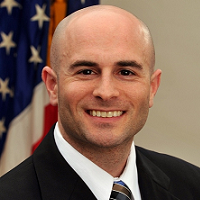 By Steven Posnack, M.S., M.H.S. Deputy National Coordinator for Health Information Technology
By Steven Posnack, M.S., M.H.S. Deputy National Coordinator for Health Information Technology
Twitter: @ONC_HealthIT
Steven’s Twitter: @HealthIT_Policy
Over six years ago, ONC embarked with all of you on an ambitious initiative to create a shared, nationwide interoperability roadmap (the Roadmap). In typical fashion, we produced a draft, many of you shared your comments (about this time in 2015), and we released the final Roadmap in October, 2015.
At a time when consistent direction was needed, the Roadmap sparked action and sharpened dialog across a number of technology and policy dimensions. Indeed, having worked on the Roadmap, it’s hard to believe that we’re almost midway through 2021. Like many of you, I’ve got my wish-we-could-haves, but on the whole the entire health IT ecosystem has made substantial leaps forward in many areas highlighted by the Roadmap.
The Roadmap helped lay the groundwork and set the direction for policy development on information blocking, reducing provider burden, and nationwide, electronic health information exchange – to name a few. On the technical side, the Roadmap set the stage for regulatory and industry investment around the HL7® Fast Healthcare Interoperability Resources (FHIR®) standard and application programming interfaces, spoke to the need for what is now the United States Core Data for Interoperability (USCDI) standard, and laid out a vision for patients and their care teams to have greater, more convenient access to electronic health information.
The Roadmap looked 10 years into the future and projected health care interoperability milestones for the nation to achieve within three overall time bands “2015 to 2017,” “2018-2020,” and “2021-2024.” As with all long-term plans, roadmaps, and strategies there comes a time when the future becomes the present. Collectively, we have all made solid progress on many of the early milestones identified by the Roadmap. It’s important to recognize those successes while at the same time acknowledging that the Roadmap itself no longer drives our work. Though the Roadmap has been sunset slightly ahead of the third time band’s final date, it will continue to be accessible on HealthIT.gov for referential purposes.
As a community, we are well positioned to continue to advance health IT interoperability with the 21st Century Cures Act and its implementing rules now in place, the 2020-2025 Federal Health IT Strategic Plan released, and continued insights from the Health IT Advisory Committee (HITAC) informing our work (e.g., priority uses of health IT and related standards). Indeed, from ONC’s perspective, we will continue to lean into our coordination role across government and industry; align investments in standards development, pilots, and programs; promote the implementation and use of what’s been built over these many years; and drive to outcomes not yet fully realized.
This post was originally published on the Health IT Buzz and is syndicated here with permission.
